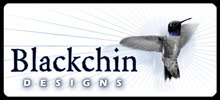
Home Improvement: An Osprey and an epic nest in progress.
When I was little, I wasted a lot of time looking forward to the next developmental milestone in my life. I couldn't wait to be able to ride my bike without training wheels. Then be able to stay home without a sitter. Then be allowed to drink coffee and wear makeup and make out. (The latter milestone regrettably arrived only after the "I'm of legal age and you can't stop me" milestone.)
I've not tried to rush my development as a birder so much, but I still celebrate the developmental milestones when they come. When I first started, I was quite proud of myself for figuring out that Snowy Egrets and Great Egrets were indeed different birds, and the former wasn't just a younger version of the latter. Then I mastered all the year-round residents in my area and learned to identify them by sound. And I looked forward to the next steps: Being able to casually toss off words like "primaries", "tertials", and "malar stripe" in the field without referring to the diagram in the Sibley guide. Being able to set up and train a spotting scope on anything, no matter how far away and fast-moving, in seconds. And maybe a few years from now, mastering the "hard" birds I'd been allowing myself to ignore: sparrows, immature gulls, warblers in primary plumage, and Empidonax flycatchers.
Last week, Glenn and I went on Alachua Audubon's trip to Persimmon Point, a part of Paynes Prairie State Reserve not normally open to the public, and there our able trip leaders scared up eight sparrow species, one of which was a lifer for both Glenn and me (a Field Sparrow) and another that was a lifer for him and still a great novelty for me (a Grasshopper Sparrow). And I realized that they indeed looked quite different from the usual Savannah and Vesper Sparrows hanging in the public parts of the prairie, and if I saw them on their own, they'd jump out at me. And I also realized that I wanted to seem them and their relatives again. And so did Glenn.
We couldn't go back to Persimmon Point, but La Chua was right nearby, so we set off for an early-morning sparrow hunt there. When we arrived, the parking lot was nearly empty, but the trees were noisy with birdsong, a portent of a promising day. What was not so promising was my realization that I had left my binoculars at home. So I left Glenn with his photo gear to get a head start on our sparrow hunt, while I drove back home to get them.
While I was gone, Glenn kept himself busy shooting a pair of Osprey building a nest not far from the trailhead. One of them brought in—and subsequently dropped—a stick over six feet long.
Brown Thrashers, Gray Catbirds, Eastern Towhees, and Northern Cardinals were all noisily foraging in the leaf litter not far off the trail. We caught a glimpse of a Hermit Thrush, and saw and heard several White-eyed Vireos hopping in branches just overhead.

We made a point of exploring the trail slowly, in case any interesting sparrows (or other small birds) were around. There weren't—we got a quick glimpse of a single White-crowned Sparrow, and saw a number of Savannah and Swamp Sparrows—but that was about it. The exotica were not about to make a show. It took us a couple of hours of exploration to make it to the observation tower at the end of the trail, and all along the way, people kept telling us that they had seem Whooping Cranes close up. And when we got there, we saw them too:

This guy was standing only ten feet or so from the deck, unworried about the crowds of cooing visitors almost close enough to touch him. Even more amazing was that there was not just one Whooper there, but six—at one point, I saw two groups of three in my binoculars at the same time. And even better than that was that they were vocalizing, something I'd never experienced before. Their cry is strange—long and clear and sort of sad, like a weird cross between a loon and a Canada Goose.
But the best thing about seeing so many Whoopers so close up was watching them interact: one of the three-bird sets clearly consisted of a couple and an interloper, whom the other two kept trying to chase off. I'd never seen Whooping Cranes fight before. Here are two of them, just after they (temporarily) got rid of their unwelcome companion:

So these grand, majestic, seriously endangered birds can be as petty and petulant as everyone else. For some strange reason, I found this somewhat reassuring.
I may not have gotten my desired sparrow fix, but I got a life lesson of sorts—even though I don't quite understand it yet.


















